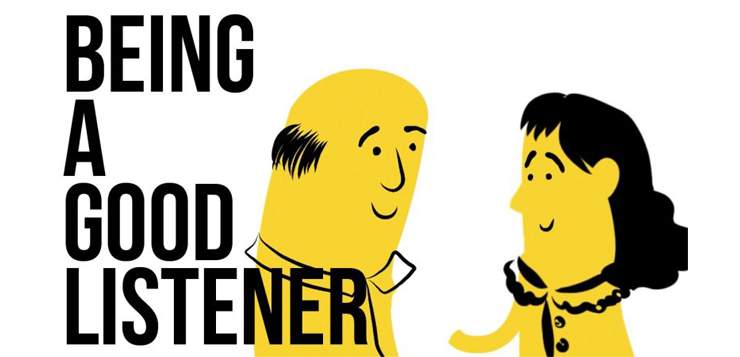We all crave love, intimacy, and genuine connection, but our unconscious habits and reactions can get in the way of our most important relationship skill: mindful communication. When we practice being fully present for the beautiful, dynamic, and messy realm of human relationships, we bring our mindfulness practice truly “off the cushion.”
While every relationship we have begins with our relationship with ourselves, relational mindfulness gives us the tools we need to connect more deeply with others. Indeed it is the arena of meeting the day-to-day family, work, and societal struggles that we can profoundly deepen our mindfulness practice.
What Does Relational Mindfulness Look Like?
Imagine yourself in one of these situations:
You are in conversation with your spouse or partner and you feel yourself becoming triggered. As much as you want to stay present, you begin to shut down and become reactive.
You are at a social gathering and don’t know many people, so you begin to feel awkward and disconnected. You try to make small talk but end up retreating into your phone.
You have to have a difficult conversation with a co-worker and find yourself unable to get back to work, and instead ruminatie on all the things you could have said.
You are listening to the news and find yourself stressed, worried, overwhelmed, and feeling hopeless.
When we apply mindfulness to these everyday situations, we can shift away from our habitual reactions and begin to open ourselves to responding with compassion. We can learn to use our trigger moments to deepen our quality of presence and understanding. Rather than reacting (as described above), we can recognize that those every-day moments are opportunities to practice mindfulness:
The Nine Principles of Relational Mindfulness Practice
1) Set the Intention to Pay Attention. Beginning with the intention to pay attention moment by moment enables you to recognize when you’re getting caught up in unconscious habits that get in the way of genuine connection. When you can pay attention to these moments you give yourself the opportunity to investigate what’s behind them: Are you seeking approval? Wanting to be right? Wanting to be liked? When you allow your deeper intention of staying present be your foundation you give yourself the choice of responding rather than reacting.
2) Take a Mindful Pause During Conversations. By pausing before, during, and after conversations, you can stay connected with your deeper self as you engage with others. Each time you take a pause, breathe, and turn your attention within, you invite yourself into presence. You can return from distractions (or inner stories that can cause you to disconnect). If, for instance, an inner story is creating anxiety or judgment, you can pause and consider if this is really what you want to give your energy to.
3) Listen Deeply. Listening to life, moment by moment, as it unfolds is the essence of mindfulness practice. Through practicing deep listening in relationship with others, possibilities for connection open up in ever widening circles. While most of us think of listening as something that requires effort, mindfulness teaches us how to listen from a place of less effort and more ease and relaxation.
4) Practice Mindful Inquiry. Learn to inquire into your present moment experience with care and curiosity. Ask questions such as, “Through what lens am I perceiving?” “Is the thought I’m having really true?” The more you become aware of the energy that you give to your inner stories, the more you can release those stories and see others clearly and compassionately. If, for instance, you notice yourself harshly judging someone, or comparing yourself to someone, instead of letting that story color your interaction, you can learn to question it and redirect your attention.
5) Turn Towards Challenges, Rather Than Away. Most people have been taught to turn away from the challenges they face. No one enjoys moments of discomfort. But being challenged is a natural and inevitable part of being human. Relational mindfulness invites you to turn towards discomfort so you can deepen your capacity for presence. When a difficult emotion, such as hurt or jealousy, arises during an interaction, you can gently acknowledge it and be with it. You can use your discomfort as an invitation to bring more compassion and healing to a part of you that you may not like or understand.
6) Take Responsibility When Things Get Tough. It’s easy to get caught up placing blame on others, thinking something is “their fault” or “their issue, not mine.” Taking responsibility for your internal response to difficult situations allows you to let go of the desire to blame, judge, or place yourself above someone. This kind of “looking within” can deepen your practice immensely. Rather than placing blame, asking yourself: “What is this difficulty inviting me to investigate and bring compassion to?” is a useful starting point for learning how to take more responsibility.
7) Bring Curiosity to Things you “Take Personally.” Not only do we get caught up taking our own thoughts extremely personally (believing rather than questioning the stories we tell ourselves), we also take things that other people say personally. By practicing not taking life so personally, you can create the space needed to see the bigger picture and to see yourself within the bigger picture. Not taking things personally helps you to stay connected to others, to see that we’re all trying to do the best we can, rather than perpetuating a false sense of division, or holding onto judgments (about yourself or others). This is by no means an encouragement to bypass your personal feelings, but a means to bring skill and curiosity your experiences.
8) Bravely Speak Your Truth. Learning to be vulnerable and honest, even when it is difficult, allows you to acknowledge the complexity and contradiction that’s naturally part of life. Even though it feels scary sometimes, skillful truth telling is a gift to everyone you engage with. It can take time to learn how to speak your truth, but here are three encouragements: 1) Take the risk! When you are honest and allow yourself to be seen as you are, you invite others to do the same. 2) Take off your mask. When you find yourself putting on a mask to avoid the truth, question if this is really serving you. For instance, if you put on a social or smiling mask when you are actually feeling sad, you miss opportunities for genuine connection. 3) Trust your true voice. If you take time to be still and quiet, and listen deeply enough, you will hear your true voice of your inner guide.
9) Act with Compassion. When you pause, listen deeply, and inquire into your experience, compassionate action can arise organically in the form of insight, intuition, and self-knowledge. Compassion is not a concept—not something to find through cognitive understanding. It exists inside of you, not outside of you. It can be accessed directly by listening to your own heart. Ask yourself: “What feels genuinely compassionate in this moment? What is best for all in this moment?”
Relational mindfulness offers both a set of teachings, and tools for embodiment. It is not a set of standards to hold yourself to or to use against yourself or others, but a set of encouragements for healing. These principles can help you to bring more care and compassion to your families, love relationships, work life, social action and community organizing, and most importantly, your relationship with yourself.
Read more
How to Be Kinder to Yourself
We all tend to think the worst of ourselves when under a lot of stress. The next time you feel like you’re being too hard on yourself, try this simple practice to foster self-compassion.
Read More
A Kindness Practice for Families
Explore this mindfulness practice that parents and kids can do together—offering good wishes and compassion to others.
Read More










